Hokas are well-cushioned running shoes and are probably one of the best running shoe companies in the market. They are meant to keep you comfortable throughout your run.
Then why do I hear you say “Why do Hokas hurt my feet?”.
There may be a lot of reasons for that. Some are generic that are associated with any running shoe, and some are specific to the combination particular to your feet and the Hoka of your choosing.
We have explained almost all the running shoes that are from Hoka and the probable causes that they may hurt your feet.
You can know more about your pair in the following sections…
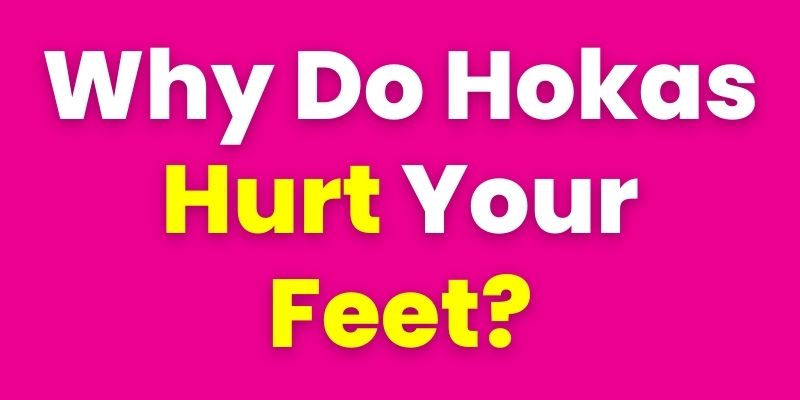
Why Do Hokas Hurt Your Feet?
Hokas hurt feet if the size of the shoes is not right, unmatching arch height, the width of the shoe does not match feet width, the collar padding is not sufficient, the padding of the tongue is not enough for the user, and/or the type of the shoe doesn’t match the activity.
These are some of the reasons why you feel pain while wearing Hoka shoes. Apart from them, there are some other general reasons why running shoes make your feet hurt. These reasons are applicable for Hoka shoes as well.
We will cover these reasons along with specific models so that you can check if you need to change something that you are doing or if you need to replace the shoe altogether.
Table of Contents
1. Hoka Carbon X 3
2. Hoka Mach Supersonic
3. Hoka Gaviota 4
4. Hoka Bondi 7
5. Hoka Clifton 8
6. Hoka Arahi 6
7. Hoka Rincon 3
8. Hoka Mach 4
9. Hoka Clifton EDGE
10. Hoka Kawana
11. Hoka Elevon 2
12. Hoka Rocket X
13. Hoka Speedgoat 5
14. Hoka Torrent 2
15. Hoka Stinson ATR 6
16. Hoka Speedgoat 4 GORE-TEX
17. Hoka Zinal
18. Hoka Mafate Speed 3
19. Hoka Anacapa Low GORE-TEX
20. Hoka Challenger ATR 6
21. Hoka Tennine
22. Hoka EVO Jawz
23. Hoka X Bodega Kaha Low GTX
Hoka Carbon X 3
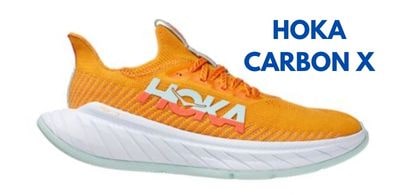
Why do Hoka Carbon X 3 hurt feet?
Hoka Carbon X can make feet hurt if the user has high arches, wide forefoot, high midfoot volume, wide heel area, and/or suffers from foot conditions like Achilles Tendonitis, which are not suitable for low drop shoes.
Hoka Carbon X is a shoe that you are unlikely to have issues with length. However, since it has a medium arch height and doesn’t come in a wide variety, this may lead to foot pain, if you have a different foot requirement.
Related:
Hoka Mach Supersonic

Why do Hoka Mach Supersonic hurt feet?
Hoka Mach Supersonic can make feet hurt if the user has high arches, wide forefoot, high midfoot volume, wide heel area, and/or suffers from foot conditions like Achilles Tendonitis, which are not suitable for low drop shoes.
Hoka Mach Supersonic is meant for neutral runners who don’t have a wide shoe requirement.
Also, since this is a low-drop shoe with a maximum drop of 5mm, this may be unsuitable for runners with stiffer calf muscles or Achilles area.
In such cases, runners with plantar fasciitis also will have a problem as the low drop will load the calf muscles more thus tending to aggravate the plantar fasciitis condition.
This may also give you some discomfort and pain in the knees.
Related:
10 Best Running Shoes for Shin Splints and Wide Feet
10 Best Running Shoes for Plantar Fasciitis and Knee Problems
Hoka Gaviota 4
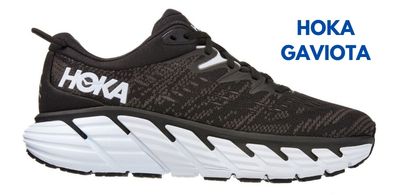
Why do Hoka Gaviota 4 hurt feet?
Hoka Gaviota can make feet hurt if the user has high arches, wide forefoot, medium to high midfoot volume, wide heel area, and/or suffers from conditions like Achilles Tendonitis, and tight calf muscles, which are not suitable for low drop shoes.
Hoka Gaviota is meant for overpronating runners who have a medium to narrow shoe requirement. If you have wider feet on any of the three zones (forefoot, midfoot, rearfoot), this shoe may cause you pain and blisters.
Also, if you are a neutral or underpronating runner, then also you may have foot pain as Hoka Gaviota will try to restrict your natural foot movement.
Since this is a low-drop shoe with a maximum drop of 5 mm the area at the back of the ankle will stretch more.
This may not be a problem if you have a flexible ankle region, otherwise, you may feel pain in the calf, ankles, and the back foot area.
Related:
Hoka Bondi 7
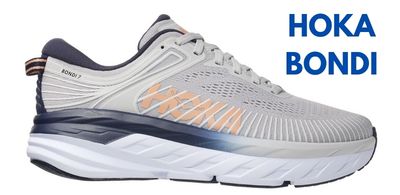
Why do Hoka Bondi 7 hurt feet?
Hoka Bondi can make feet hurt if the user has high arches, and/or suffers from conditions like Achilles Tendonitis, tight calf muscles, and/or inflexible sole of the feet.
Hoka Bondi is a neutral running shoe with a low drop of 4 mm with medium arch support. If you have an arch that is above average height or has cavus feet then the Bondi cannot provide you with arch support.
Also, if you have cavus feet, then, in general, you will have a high top of the foot. This may get rubbed on the upper of the Bondi and may develop blisters.
As mentioned above, with a low drop, Bondi may cause the same problems if you have inflexible ankle and foot soles.
Related:
Hoka Mach Vs Bondi: Which Hoka One One Should Your Choose?
Hoka Clifton 8
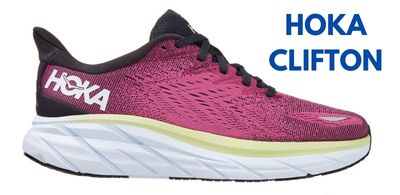
Why do Hoka Clifton 8 hurt feet?
Hoka Clifton can make feet hurt if the user has high arches, and/or suffers from conditions like Achilles Tendonitis, tight calf muscles, and/or stiffness of foot soles.
Hoka Clifton is meant for neutral runners who require medium arch support. If you have a high arch then you will face the same problems as you will face with Bondi.
The arch support will not be enough and you will have to have to deal with pain in the arch and the foot area.
The drop of the shoe is 5 mm. So, if you don’t have a flexible ankle or calf region, you will end up with discomfort or pain in those areas as well.
Clifton is available in wide and being true to size, you are unlikely to have any problem with the fit of the shoe, even if you have wide feet.
Related:
Asics Gel Kayano Vs Hoka Clifton: Which One Is The Best For You?
Brooks Adrenaline Vs Hoka Clifton: Which One is Your Choice?
Brooks Ghost Vs Hoka Clifton – Which One Is Best For Your Feet?
Hoka Arahi 6
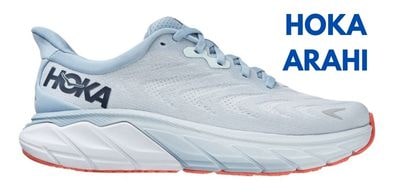
Why do Hoka Arahi 6 hurt feet?
Hoka Arahi can make feet hurt if the user has high arches, and/or suffers from the stiffness of calf muscles and tendons, and/or stiffness of foot soles.
Hoka Arahi is a ‘stability’ running shoe that is meant for runners with overpronation. If you are a runner with neutral or underpronation, it can cause pain in the foot, especially in the ankle area and sometimes the knees.
Also, people with high arch can also have to deal with foot pain if you have are using Arahi. Low drop can also cause pain in people with stiff calves, ankle, and foot areas.
Hoka Arahi has a balanced cushioning which is neither too plush nor too responsive, this may cause pain in those runners who specifically need a plush level of cushioning.
Being true-to-size and available in ‘wide’, you may not face issues with the fitting of the shoe.
Related:
Asics Gel Kayano Vs Hoka Arahi: Which Is The Option Best For you?
Hoka Rincon 3
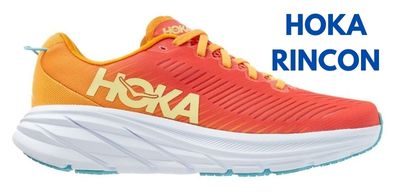
Why do Hoka Rincon 3 hurt feet?
Hoka Rincon can make feet hurt if the user has low or flat arches, narrow heels, and/or higher heel-to-toe requirements.
Hoka Rincon is a neutral running shoe. It will help runners with neutral or underpronation, to have a more stable ride.
However, if such a runner has low or flat arches, then they may feel pain in the arches as Rincon has arch support for medium to high arches.
If you have a narrow heel, you may end up having blisters as the heel fitting of Rincon is for medium to wider heels. This may cause some rubbing on the side of the heels to be narrow and blisters may occur.
It has balanced cushioning. If you are a runner who has plush cushioning requirements, you may feel pain in your feet.
Hoka Mach 4

Why do Hoka Mach 4 hurt feet?
Hoka Mach can make feet hurt if the user has high arches, wider feet, and/or higher heel-to-toe drop requirements.
Hoka Mach is a ‘stability’ running shoe. It is meant for runners with overpronation.
If the user of the shoe is a runner with neutral or underprontion, then they may face pain in their ankle and knee area.
Also, runners with high arches can feel pain in their arch area due to insufficient support.
If you have a wider foot, then also you may have to deal with pain and blisters as Hoka Mach is meant for feet up to medium width and wide width for this shoe is not available.
It has responsive cushioning. If you are a runner who has medium to plush cushioning requirements, you may feel pain in your feet.
Related:
Hoka Clifton EDGE
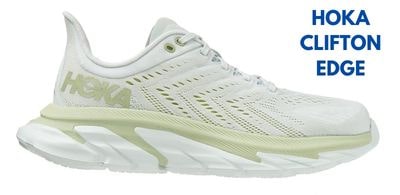
Why do Hoka Clifton EDGE hurt feet?
Hoka Clifton EDGE can make feet hurt if the user has high arches, wider feet, and/or needs higher heel-to-toe drop.
Hoka Clifton EDGE is a neutral running shoe. If a runner with overpronation uses this shoe, it will provide no extra support to the runner. This will put additional pressure on their ankle and knees due to the turning of the feet resulting in discomfort and pain.
Also, the arch support of Clifton EDGE is meant for foot arches up to medium arches. If you have a high arch and using this shoe, you may feel pain in the arch area.
If you have a wider foot, then also you may have to deal with pain and blisters as Hoka Mach is meant for feet up to medium width and wide width for this shoe is not available.
It has responsive cushioning. If you are a runner who has medium to plush cushioning requirements, you may feel pain in your feet.
Related: Brooks Vs Saucony Vs Hoka: Which Brand Is Right For You?
Hoka Kawana
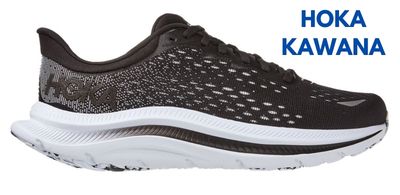
Why do Hoka Kawana hurt feet?
Hoka Kawana can make feet hurt if the user has high arches, narrow heels, wider forefoot, wider midfoot, and/or needs higher heel-to-toe drop.
Hoka Kawana is a running shoe with moderate stability. It is suitable for runners with neutral to moderate overpronation.
However, if you have underpronation or severe overpronation, then this running shoe will not support you. In both cases, you may end up with pain in both the ankle and knee areas.
A runner with high arches may feel pain in the arch area as Hoka Kawana supports arches up to medium height.
If you have a wider foot, especially in the forefoot and the midfoot area, you may have to deal with pain and blisters as Hoka Kawana supports feet up to medium width. The wide width for this shoe is not available.
Hoka Elevon 2

Why do Hoka Elevon 2 hurt feet?
Hoka Elevon can make feet hurt if the user has high arches, narrow heels, wider forefoot, wider midfoot, and/or needs higher heel-to-toe drop.
Hoka Elevon is a neutral running shoe. It is suitable for runners with neutral to moderate underpronation.
For overpronating runners, Elevon may cause pain, as it will provide no motion control. Especially you may feel pain in the outer side of your ankles and knees.
If you have high arches, you may feel pain while wearing Elevon as the arch support it provides is not sufficient and is meant for only up to medium arches.
If you have a wider forefoot or midfoot, Elevon may be painful and may cause blisters as the width in those areas are not sufficient.
Also, the tongue is thinner in Elevon and if you have a high top of the foot, it may cause some discomfort due to the lesser padding.
Hoka Rocket X

Why do Hoka Rocket X hurt feet?
Hoka Rocket X can make feet hurt if the user has low arches, wider feet, and/or has stiffer calf or ankle area unsuitable for lower heel-to-toe drop as in this shoe.
Hoka Rocket X is a neutral running shoe. If you are an overpronating runner, Rocket X will not be able to provide you with the support you need. The lack of support may lead to pain in your ankles and knees.
The arch support of Rocket X is for medium to high arches. If you have a flat foot or you have low arches, your arch area may have pain due to the height of the arch support.
Wider feet runners will also have a problem with this shoe which is meant for runners with narrow to medium width feet. Especially the heels which will support runners with narrow to medium width heels.
Rocket X has responsive cushioning. In other words, they are not the ones with plush cushioning. If you have existing foot problems and need a well-cushioned running shoe, then wearing a responsive shoe may increase your woes.
Hoka Speedgoat 5
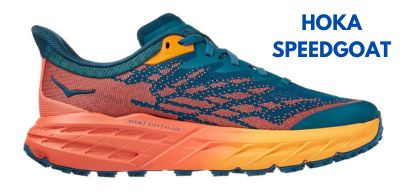
Why do Hoka Speedgoat 5 hurt feet?
Hoka Speedgoat can make feet hurt if the user has high arches, wider feet, and/or has a stiffer calf, ankle area, and/or foot soles unsuitable for lower heel-to-toe drop as in this shoe.
Hoka Speedgoat is a neutral trail running shoe with balanced cushioning. It doesn’t have any support for overpronation. If you are a runner who needs a ‘stability’ running shoe and is using Speedgoat, it may cause pain in the ankle, foot soles, and the calf areas.
The arch support of Speedgoat is up to medium arches. If you have a high arch or have completely flat feet, you may face some pain in the arch area of your foot.
Runners with wider feet also will have to deal with pain if they try to use Speedgoat. Speedgoat supports foot width up to medium width. If you have a wide foot, this running shoe is not for you as it is not available in wide fit.
It has balanced cushioning. If you have foot problems and need a plush cushioned running shoe, then also you may face pain.
Also, people suffering from stiffer calf muscles and/or Achilles Tendonitis may find this shoe to be uncomfortable as the drop of this shoe is low (4 mm). This loads the calf muscles more and you may face some pain in those areas.
Related:
Hoka Torrent 2
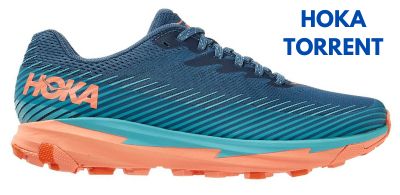
Why do Hoka Torrent 2 hurt feet?
Hoka Torrent can make feet hurt if the user has low arches, wider feet, needs plush cushioning, and/or needs a heel-to-toe drop as in this shoe.
Hoka Torrent is a neutral trail running shoe with responsive cushioning. It is not suitable for runners with overpronation. It cannot provide stability or motion control.
If you are a runner with overpronation and using this running shoe, you may end up with ankle and knee pain due to excessive inward foot movement
Hoka Torrent can support arch height for up to medium height. If someone has a cavus foot or has a high arch or flat feet, Torrent will not be able to provide support. In such cases, you may end up with arch pain.
Also, if you have a cavus foot, the upper area of your foot which joins with your leg may get rubbed with the upper of the shoe. This friction may create blisters on your feet.
Since this shoe is not available in wide width, if you have wide feet, your foot may pain due to the snug fit of the shoe and you may also end up having blisters.
The responsive cushioning of the shoe is a great feature for speedrunners. However, if you have foot pain and need something cushier, you may have to deal with more pain due to the lesser cushioning of this shoe.
For some runners, the insoles feel harder than the previous version and may contribute to some amount of discomfort, if you are not used to that.
Hoka Stinson ATR 6
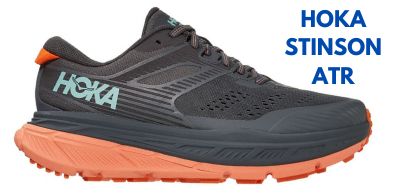
Why do Hoka Stinson ATR 6 hurt feet?
Hoka Stinson ATR can make feet hurt if the user has high arches, wider feet, and/or needs a higher heel-to-toe drop, unlike this shoe.
Hoka Stinson ATR is a neutral trail running shoe with plush cushioning. Runners with overpronation may get knee and ankle pain while using this running shoe.
The arch support for Stinson ATR is up to medium arches. It cannot provide support for higher arches and if you have one, you are most likely to have arch pain after using this shoe for some time.
Stinson ATR is not available in wide width. If you have wide feet, then you may end up feeling pain due to the tight fit of the shoe.
The cushion of this version is a bit firmer and if you are used to a softer cushioning then you may feel some discomfort with this shoe.
Hoka Speedgoat 4 GTX

Why do Hoka Speedgoat 4 GTX hurt feet?
Hoka Speedgoat can make feet hurt if the user has high arches, wide feet, and/or needs a higher heel-to-toe drop, unlike this shoe.
Hoka Speedgoat GORE-TEX is a neutral trail running shoe with balanced cushioning. If you are an overpronating runner and using this shoe, you may face knee and ankle pain due to a lack of motion control and stability.
The arch support for Speedgoat GTX is up to medium arches. It cannot provide support for high arches. If you have high arches then you may end up having arch pain due to lesser arch support.
Another problem you will face if you have wide feet and use Speedgoat GTX is that it cannot support wide feet. This will be tight for runners with wide feet and consequently have to deal with pain arising from such a snug foot.
Hoka Zinal
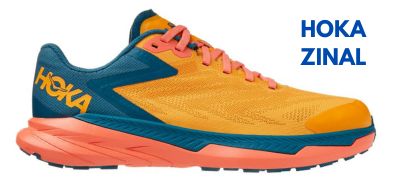
Why do Hoka Zinal hurt feet?
Hoka Zinal can make feet hurt if the user has high arches, wide feet, has stiffer calf muscles, ankles, and foot soles, and/or needs a higher heel-to-toe drop, unlike this shoe.
Hoka Zinal is a neutral trail running shoe with responsive cushioning. It is definitely not a running shoe meant for overpronating runners. If you are one, then you may end up with ankle and/or knee pain.
If you have stiffer calf muscles, ankles, or foot soles, then you may also have to deal with pain related to these areas as Zinal is a low drop shoe and will overload these areas while running.
If you have wide feet or high arches, Zinal may not be able to provide support to you as it is not available in wide fit or for higher arches. In such cases also, you may have to deal with the associated discomfort.
Hoka Mafate Speed 3

Why do Hoka Mafate Speed hurt feet?
Hoka Mafate Speed can make feet hurt if the user has low arches, wide feet, has stiffer calf muscles, ankles, and foot soles, and/or needs a higher heel-to-toe drop which is not provided by this shoe.
Hoka Mafate Speed is a neutral trail running shoe with balanced cushioning. Runners who are overpronating and using this shoe may get knee and/or ankle pain due to lack of support.
If you have stiffer calf muscles, ankles, or foot soles, using Mafate Speed may make those areas painful due to the low heel-to-toe drop of the shoe.
Also, wider foot runners may have to deal with pain due to a snug fit of the upper as Mafate Speed is available in normal width not in wide fit.
If you have a low arch or flat feet, this may cause you pain in the arch area as Mafate Speed has arch support for medium to high arches.
Hoka Anacapa Low GTX
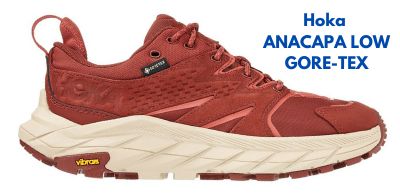
Why do Hoka Anacapa Low GTX hurt feet?
Hoka Anacapa Low GTX can make feet hurt if the user has high arches, wide feet, has stiffer calf muscles, ankles, and foot soles. Blisters may occur if you have sweaty feet.
Hoka Anacapa Low GTX is a neutral trail running shoe with balanced cushioning. Overpronating runners may have knee and/or ankle pain after using this for some time due to a lack of stability and motion control.
If you have stiffer calf muscles, ankles, or foot soles, using Anacapa Low GTX may overload those areas and you may have to deal with pain and discomfort.
Anacapa Low GTX is not available in wide fit. If you are a runner with a wide foot, then you may have to deal with some pain and discomfort due to the snug fit after some time.
Arch support for Anacapa Low GTX is for up to medium arches. If you are someone with a high arch or flat feet, then also you may have to deal with pain in the arch area.
It is a water-resistant shoe and uses GORE-TEX technology. So, it is not as breathable as the mesh running shoes. If you are someone with sweaty feet, you may have to deal with blisters.
Hoka Challenger ATR 6

Why do Hoka Challenger ATR 6 hurt feet?
Hoka Challenger ATR can make feet hurt if the user has low arches, has stiffer calf muscles, ankles, and foot soles, and/or needs plush cushioning.
Hoka Challenger ATR is a neutral trail running shoe with balanced cushioning. Since it lacks the stability component, it is not suitable for runners with overpronation. If you use Challenger ATR being an overpronating runner, you may have pain in your feet, knees, and ankles after some time.
If you have stiffer calf muscles, ankles, or foot soles, using Challenger ATR may put an additional load on them. This may add some discomfort to these areas of your legs and feet.
Arch support for Challenger ATR is for medium to high arches. If you are someone with a low arch or flat feet, you may feel pain or discomfort in the arch area.
Hoka TenNine
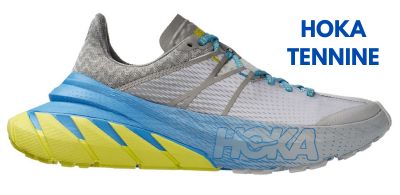
Why do Hoka TenNine hurt feet?
Hoka Tennine can make feet hurt if the user has high arches, wide feet, stiffer calf muscles, ankles, and foot soles, and/or is a forefoot striker.
Hoka Tennine is a stability trail running shoe with plush cushioning. If a neutral runner or an under pronating runner uses it for some time, they may have to deal with some pain in the ankle area and the knees.
Tennine will inherently try to control your feet’s motion which is not necessary for a neutral runner. For an underpronating runner, the kind of support that is needed is almost the opposite of that of the pronating runner.
In both cases, using a Tennine may cause some discomfort and/or pain to your feet and your lower body.
If you have stiffer calf muscles, ankles, or foot soles, Tennine may put additional load on them being a low drop shoe. This may make you feel a bit uncomfortable and ultimately pain if you continue to use it.
Arch support for Tennine is for medium arches. If you are someone with flat feet or have high arches, you may feel pain or discomfort in the arch area.
The midsole and the outsole of Tennine are extended backward. This causes the center of gravity to shift towards the back of the shoe. This is great for the heel strikers. However, if you are a forefoot striker, it will become difficult for you to have a forefoot strike.
Due to the design, the natural tendency of the shoe will be to land on the heels. A forefoot striker may have to deal with some foot, ankle, or knee pain due to a sudden and probable change in form.
Hoka EVO Jawz

Why do Hoka EVO Jawz hurt feet?
Hoka EVO Jawz can make feet hurt if the user has high arches, wide feet, has stiffer calf muscles, ankles, and foot soles, and/or needs a high amount of cushioning.
Hoka EVO Jawz is a neutral running shoe with responsive cushioning. This running shoe may cause some discomfort and/or pain in the feet of overpronating runners due to the lack of stability component in the sole.
It is not good for runners with high arches as EVO Jawz provides arch support up to medium arches. For flat feet also, this may be a problem, and may have to deal with some amount of discomfort and/or pain in the arch area.
EVO Jawz has a really low heel-to-toe drop (3 mm). This makes it unsuitable for runners with foot issues like Achilles Tendonitis or plantar fasciitis.
Such runners in general have stiffer calf muscles and ankle area. Having a low drop makes these areas work overtime increasing the discomfort and pain.
Related:
Hoka X Bodega Kaha Low GTX
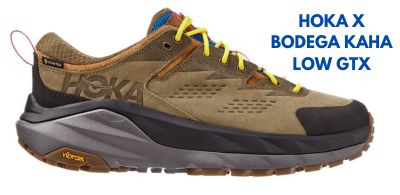
Why do Hoka X Bodega Kaha Low GTX hurt feet?
Hoka X Bodega Kaha Low GTX can make feet hurt if the user has high arches, wide feet, has stiffer calf muscles, ankles, and foot soles.
Hoka X Bodega Kaha Low GTX is a neutral running shoe with plush cushioning. The midsole doesn’t provide any kind of stability and motion control. This is why this shoe may cause discomfort and/or painful feet for runners with overpronation.
The arch support of X Bodega Kaha Low GTX is up to medium arches. If you have high arches or flat feet, you may have to deal with some pain in the arch area of the foot.
X Bodega Kaha Low GTX is for runners with narrow or medium width feet. If you are a runner with wide feet and use this running shoe, you may have to deal with discomfort and/or pain due to the snug fit of the shoe.
The heel-to-toe drop of X Bodega Kaha Low GORE-TEX is around 6 mm. This is not a very low drop but also not a high drop. This will be uncomfortable for runners with stiff ankles, calf muscles, and foot soles. If you continue to use them, due to the additional load, you may have to deal with pain and discomfort in all those areas.
Common Reasons Hoka Running Shoes Hurting Your Feet
Although individual shoes can be not suitable for your type of feet and can make them pain as mentioned above, there are some common reasons why any running shoes, not only Hokas can hurt your feet…
You can’t remember the last time you have changed your Hoka
Hokas are well cushioned forgiving shoes. However, like every other running shoes, they have an expiry.
This expiry depends on the amount of usage but as a rule of thumb, it is good to replace your Hoka after 300 to 400 miles.
Foot pain
You’ve been using your Hoka for sometime without any issue. Suddenly, you start feeling discomfort which gets changed into foot pain during or after running.
It could be the Hoka in question has lost the capability of providing cushioning to you and needs to be replaced.
Your toe-nails fall off or you get bruised toes
This is more of a sizing issue rather than a problem with your Hoka running shoe. When you are selecting a running shoe, your toes should not touch the end of the shoe. This is true even if you are running downhill.
However, if you keep losing your toe nails, you need to go for a half size bigger shoe even in Hokas which are generally true to size.
Repeat occurance of blisters, corns, calluses
These kinds of foot issue occurs when you are wearing a shoe which is either too narrow or too short.
It can also happen when the midsole loses its ability to provide cushioning and adds more stress to your feet.
If you start observing such issues with your feet which was not there earlier with the same pair of the Hoka, it is time to change it.
You have arch pain
If you are wearing a Hoka which is bigger than your feet it has a tendency to slide. To keep that from happening, the muscles in your foot sole with start tightening.
If you keep wearing the same pair, over time, this muscle stiffness will give rise to arch ache and pain in the heels. It may also develop into plantar fasciitis.
Your gait changes while wearing the shoe
If your gait changes while you wear your Hoka, the reason may be too much pressure on your tendons and muscles.
If so, you may have to reconsider the current Hoka pair and replace them with a more suitable one.
You feet are sweating too much
This may happen if you wear a Hoka which is narrow or smaller than your foot. Your feet doesn’t get enough space to breathe.
This is the reason why your feet feels so stuffy and they sweat so profusely.
You did not consider foot swelling while selecting your Hoka
When you are running, your feet swells and your Hoka becomes tighter. This can give rise to any of the foor related issues mentioned above.
If you have to lossen your shoe laces all the way to slip them off your feet after a run, you should get a pair which is slightly bigger than your current Hoka.
You frequently develop tendonitis while you run
If you are not wearing a Hoka which is suitable for your feet, tendons around your feet and ankles get inflamed. For example, you wear a neutral Hoka being a overpronating runner.
If you keep getting this, redo a gait analysis to find the kind of runninng shoe that will suit you and change according to the analysis.
You are not wearing the proper Hoka for the pupose
For example, you are wearing a Hoka which is meant for running in your gym. Such shoes lack lateral support and is not suitable for gym.
This will gradually create some discomfort for you and you may also have to deal with tendonitis.
You did not break-in your Hoka properly
You need to run quite some miles before your new Hoka is properly broken in and this process has to happen gradually.
If not, you will have to deal with foot pain, blisters and other types of discomfort.
You may need to pair up your Hoka with an insole
You may have a special feet condition and wearing a low drop Hoka is just aggravating it. You have already spent a lot of money on this shoe and you don’t want to throw it away despite the pain and discomfort.
Try pairing it up with specialized insoles for your feet condition.
Your feet changed but you are still sticking to your old Hoka
During pregnency or if you gain a lot of weight, sometime your have a foot condition called fallen arch. In other words, your foot arch literally falls.
However, you keep using the same Hoka that you have used always and that creates more pain for you.
Or let’s say, you develop bunions. Effectively, your forefoot width changes dramatically based on the size of the bunion.
However, you keep using a Hoka which is suited for narrow to medium foot width. This will cause you pain.
Instead, do a reanalysis of your foot requirement and choose a Hoka which will suit all those requirements.
Related:

Madhusree Basu
Author, Admin
Blogger and a fitness enthusiast. She loves running and Yoga and everything in between. She started running to manage her weight and to eat to her heart’s content. A true foodie at heart she shares whatever knowledge she has gained throughout the years about weight management and fitness.

